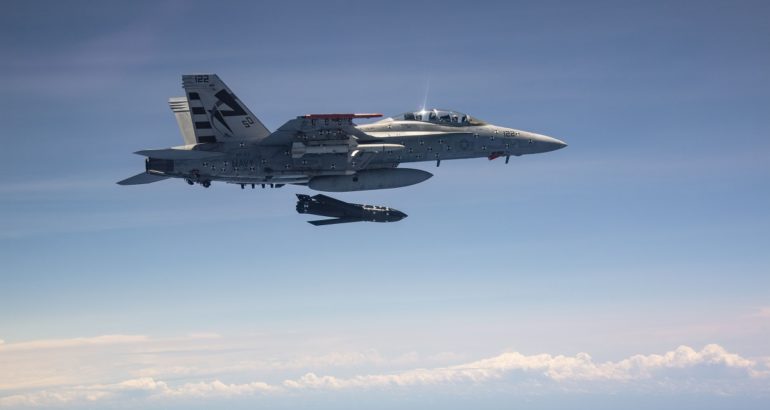As Naval News reported during the PACIFIC 2019 trade show, Lockheed Martin’s LRASM is competing against Kongsberg’s Joint Strike Missile (JSM) and Saab’s RBS 15 Mk4 for the AIR 3023 requirement of the Royal Australian Air Force (RAAF).
AIR 3023 Phase I “Enhanced Maritime Strike for the Air Combat Capability” calls for the procurement of anti-ship missiles for the Super Hornets of the RAAF. The RAAF has a fleet of a 24 F/A-18F Super Hornets and 11 EA-18G Growler. The future missile would likely be fitted on the Super Hornet exclusively however.
According to the official Defense Security Cooperation Agency (DSCA) notice:
Australia intends to use the missiles on its F-18 aircraft and will provide enhanced capabilities in defense of critical sea-lanes. The proposed sale of the missiles and support will increase the Australian Navy’s maritime partnership potential and align its capabilities with existing regional baselines. This is Australia’s first purchase of the missiles. Australia will not have any difficulty absorbing these weapons into its armed forces.

The Government of Australia has requested to buy up to two hundred (200) AGM-158C, Long Range Anti-Ship Missiles (LRASMs); and up to eleven (11) ATM-158C LRASM Telemetry Variant (Inert). Also included are DATM-158C LRASM, Captive Air Training Missiles (CATM-158C LRASM), containers, support and test equipment, publications and technical documentation, personnel training and training equipment, U.S. Government and contractor representatives technical assistance, engineering and logistics support services, and other related elements of logistics support.
Should LRASM come out as the winner of the AIR 3023 competition, this would mark the first export success of Lockheed Martin’s next generation anti-ship missile. The company is also pitching LRASM to the UK and some Asian countries such as Japan and South Korea. The missile achieved EOC with the U.S. Navy’s F/A-18E/F in November as we reported at the time.
About AGM-158C LRASM

LRASM is designed to detect and destroy specific targets within groups of ships by employing advanced technologies that reduce dependence on intelligence, surveillance and reconnaissance platforms, network links and GPS navigation in electronic warfare environments. LRASM will play a significant role in ensuring military access to operate in open ocean/blue waters, owing to its enhanced ability to discriminate and conduct tactical engagements from extended ranges.
BAE Systems’ long-range sensor and targeting technology enables LRASM to detect and engage protected ships in all weather conditions, day or night, without relying on external intelligence and navigation data.
The advanced LRASM sensor technology builds on BAE Systems’ expertise in electronic warfare (EW), signal processing, and targeting technologies, and demonstrates the company’s ability to apply its world-class EW technology to small platforms.

Armed with a 1,000 Lbs (454 kg) penetrating blast fragmentation warhead, LRASM is low observable and likely has a range comparable with JASSM ER (around 500 nautical miles).
LRASM is designed to meet the needs of U.S. Navy and U.S. Air Force Warfighters in contested environments. The air-launched variant provides an early operational capability for the U.S. Navy’s offensive anti-surface warfare Increment I requirement.
LRASM may soon find its way aboard the B-52 bomber of the U.S. Air Force and maybe, someday, aboard the U.S. Navy P-8A Poseidon.






